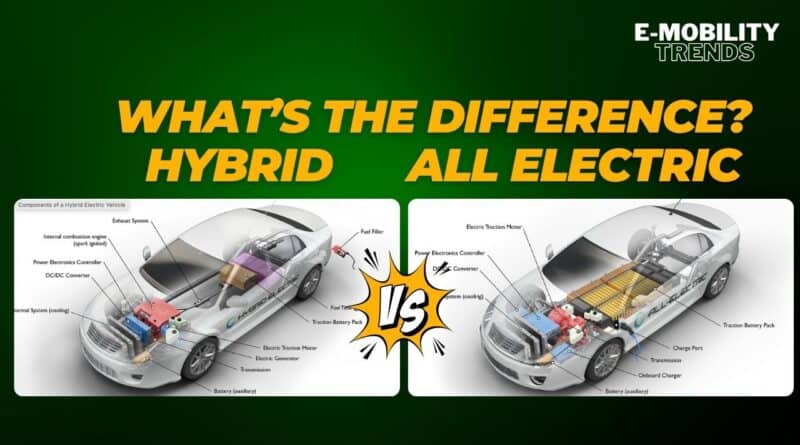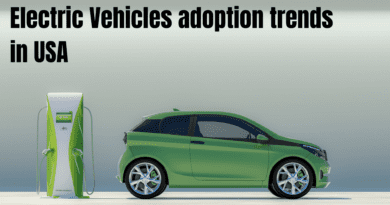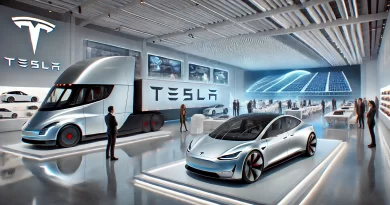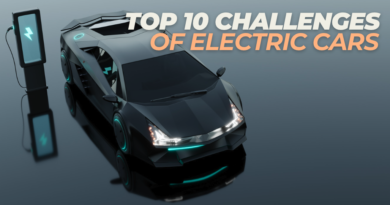Hybrid vs. Electric Cars: What’s the Difference?
The automotive world is shifting rapidly. With rising concerns over climate change, stricter emissions regulations, and a growing demand for sustainable living, vehicles that reduce our dependence on fossil fuels are more relevant than ever. Among the most prominent options today are hybrid and electric vehicles (EVs).
Both are widely considered eco-friendly alternatives to traditional gasoline-powered cars. However, they differ in how they operate, their impact on the environment, ownership experience, and long-term value. This article explores those differences in depth, helping you decide which technology best suits your lifestyle and values.
1. Introduction to Hybrid and Electric Cars
At their core, hybrid and electric cars serve the same purpose: reducing emissions and increasing fuel efficiency. Yet the way they achieve this is quite different.
A hybrid car combines a traditional internal combustion engine with an electric motor and battery. Depending on the model, hybrids can operate using the gasoline engine, the electric motor, or a combination of both. Plug-in hybrids go a step further by allowing the battery to be charged from an external power source.

An electric car, on the other hand, runs entirely on electricity. It relies on a battery pack to power electric motors and doesn’t use any gasoline. There is no engine, no exhaust, and no oil changes—just a large battery and a smooth, quiet ride.

2. How They Work
Hybrids
The system inside a hybrid is engineered to automatically determine the most efficient way to use its two power sources. At low speeds, such as during city driving, the electric motor often powers the vehicle, saving fuel. As speed increases or when rapid acceleration is needed, the gasoline engine kicks in to provide additional power. Some hybrids can drive short distances entirely on electricity, though this is limited.
Plug-in hybrids (PHEVs) are more advanced, featuring larger batteries that allow for extended electric-only driving, typically ranging from 20 to 50 miles. They can be plugged into a wall outlet or charging station, giving users flexibility to drive without using gasoline for short commutes.
Electric Cars
Electric vehicles operate more simply. Instead of combining multiple systems, they use a battery-powered electric motor as the sole source of propulsion. The battery is recharged through external electricity—either at home, work, or public charging stations. The motor provides instant torque, making EVs responsive and quiet on the road.
Regenerative braking helps recapture energy during deceleration, sending it back to the battery. This adds efficiency and extends range slightly, especially in stop-and-go traffic.
3. Performance and Driving Feel
The driving experience is one of the most noticeable differences between hybrids and EVs.
Electric cars offer immediate acceleration thanks to the instant torque produced by electric motors. The absence of gear shifts and the quietness of operation give EVs a futuristic, seamless feel. Many drivers are surprised by how responsive and fun electric cars are to drive, especially in urban settings.
Hybrids provide a smoother experience than conventional gas cars but can feel less consistent. When transitioning between electric and gasoline power, drivers might notice a brief hesitation or hear the engine engage. While not intrusive, it’s a reminder that hybrids are still built on traditional engine platforms.
Weight distribution also plays a role. Because EV batteries are usually mounted low in the chassis, they offer better handling and stability. Hybrids benefit from this to some extent, but electric cars are generally better balanced.
4. Environmental Considerations
When evaluating hybrids vs. electric cars, environmental impact is a key factor.
Electric vehicles produce no tailpipe emissions, making them the cleaner choice for urban air quality. Their environmental advantage increases when powered by renewable energy such as solar, wind, or hydroelectric sources. However, producing large lithium-ion batteries does have an environmental cost, particularly in mining and manufacturing. The good news is that over the lifetime of the vehicle, EVs generally offset this initial impact through cleaner operation.
Hybrids are more environmentally friendly than gas cars but still burn fuel and emit carbon dioxide. They are most effective in urban environments where electric assist can significantly reduce fuel use and emissions. Over long distances or highway driving, however, their reliance on gasoline increases, limiting their green benefits.
In short, EVs are better for the planet in the long term—especially as battery recycling and energy grid improvements continue to evolve.
5. Ownership Costs and Incentives
Upfront Cost
EVs tend to have a higher purchase price due to the cost of their batteries. However, federal tax credits, state incentives, and lower operating costs can make them competitive with or even cheaper than hybrids over time.
Hybrids are generally more affordable upfront, particularly if you don’t need a long electric-only range. For buyers on a budget who want better fuel economy, they offer a good compromise.
Fuel and Charging
Electricity is usually far cheaper than gasoline. Charging an EV at home can cost just a few dollars to “fill up” a battery. Public charging is slightly more expensive, especially at fast chargers, but still typically cheaper per mile than fuel.
Hybrid drivers still need gasoline, although at reduced consumption levels. Over time, fuel savings can add up, but they are generally less significant than those from EVs.
Maintenance
This is where EVs shine. With no oil, belts, or spark plugs to worry about, electric cars have lower maintenance requirements. Brake wear is also reduced due to regenerative braking. Hybrids still need engine maintenance—oil changes, filters, exhaust systems—though often less frequently than traditional vehicles.
6. Range and Refueling
Driving Range
Range is one of the most significant practical considerations.
Hybrids, especially plug-in models, offer the best of both worlds. You can drive short distances on electricity and rely on gas for longer trips. This flexibility makes them ideal for drivers who can’t always recharge or who travel frequently.
EVs are limited by battery capacity. Most modern electric cars provide between 200 to 350 miles of range, with high-end models reaching over 400 miles. While this is more than enough for daily commutes, some drivers may still experience range anxiety, especially in rural or underdeveloped areas.
Refueling and Charging
Fueling a hybrid is quick and familiar—just stop at any gas station. Charging an EV requires more planning, especially on road trips.
Charging options include:
- Level 1: Standard household outlet—very slow charging.
- Level 2: Common home and public chargers—suitable for overnight charging.
- DC Fast Charging: Rapid chargers available on highways—charge up to 80% in 30–45 minutes.
The charging network is improving, but access can still be a limitation in some areas.
7. Practical Use Cases
Hybrid and electric cars serve different needs depending on the lifestyle and driving habits of the user.
For City Commuters
If your daily commute is under 50 miles and you have access to home or work charging, an EV makes perfect sense. You’ll rarely need to visit a charging station, and you’ll benefit from the lower operating cost.
For Long-Distance Drivers
If you frequently drive long distances or don’t have easy access to charging infrastructure, a hybrid or plug-in hybrid is more practical. It eliminates the need for frequent stops and range anxiety while still offering efficiency.
For Families
Consider your needs for space and seating. Many hybrids and EVs come in crossover or SUV formats, offering ample room for passengers and cargo. EVs often have more storage space due to the absence of an engine and transmission.
8. Resale Value and Market Trends
As consumer preferences shift toward electrification, resale value is becoming an important factor.
EVs from strong brands such as Tesla tend to retain their value well, thanks to brand loyalty, over-the-air software updates, and battery longevity. However, older EVs with short ranges may see steeper depreciation.
Hybrids like the Toyota Prius have long proven to be dependable and hold their value. Buyers looking for reliability and fuel savings often seek used hybrids, maintaining their demand in the secondary market.
The growing emphasis on clean energy, government regulations, and consumer sentiment is tilting the market in favor of EVs. Automakers are ramping up electric-only models, with several announcing plans to phase out internal combustion engines altogether.
9. Technological Advancements
Battery technology is evolving rapidly. The next wave of EVs will feature solid-state batteries, promising higher energy density, faster charging, and improved safety. These innovations could push EV ranges beyond 500 miles and reduce charging time to minutes.
Vehicle-to-grid (V2G) technology is also on the horizon. EVs may soon be able to send energy back to the grid, helping stabilize demand and create new revenue streams for owners.
Wireless charging, AI-driven battery management systems, and advanced driver-assistance technologies are also being integrated more quickly into EV platforms than hybrids.
10. Which One is Right for You?
Hybrid vs. Electric Cars, there’s no one-size-fits-all answer. The better option depends on your driving habits, location, budget, and long-term goals.
Choose a Hybrid if you:
- Frequently travel long distances
- Lack access to charging stations
- Want a low-emission vehicle without range limits
Choose an EV if you:
- Commute short to moderate distances daily
- Have consistent access to charging at home or work
- Want to minimize emissions and reduce maintenance
Your current lifestyle may align better with a hybrid, but the infrastructure and vehicle technology are quickly advancing in favor of electric.
11. The Road Ahead
Governments worldwide are introducing mandates to phase out internal combustion engines within the next two decades. Countries like Norway, the UK, and parts of the U.S. have already announced plans to ban new gas-powered car sales within the 2030s.
This suggests that while hybrids play a crucial role today, they are largely considered a transitional technology. Electric vehicles are the long-term future. Manufacturers are heavily investing in EV platforms, and infrastructure investments are making charging more convenient than ever.
As battery prices drop and ranges increase, EVs will become the mainstream choice not just for the environmentally conscious—but for everyone.
Conclusion
Hybrid and electric vehicles each have their advantages. Hybrids offer familiarity, flexibility, and fuel efficiency. EVs offer innovation, lower environmental impact, and reduced operating costs.
If you’re looking for a cleaner alternative to your gas-powered car, both options are worthy. However, electric vehicles are quickly emerging as the smarter long-term choice as the world accelerates toward a greener, cleaner automotive future.
Ready to make the switch? Start by evaluating your daily routine, access to charging, and budget. Whether you choose a hybrid or an EV, you’re taking an important step toward reducing your carbon footprint and embracing modern transportation.




